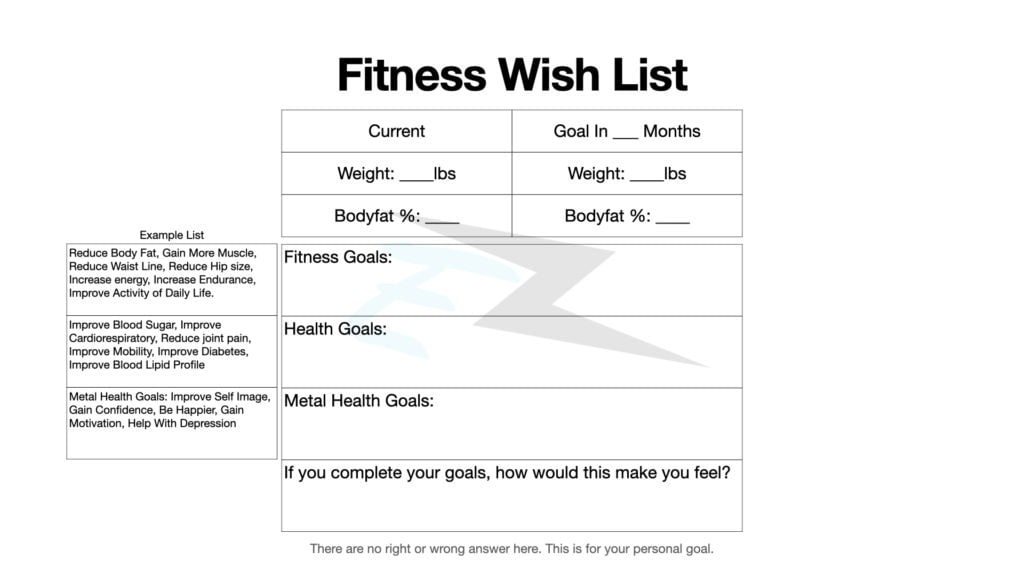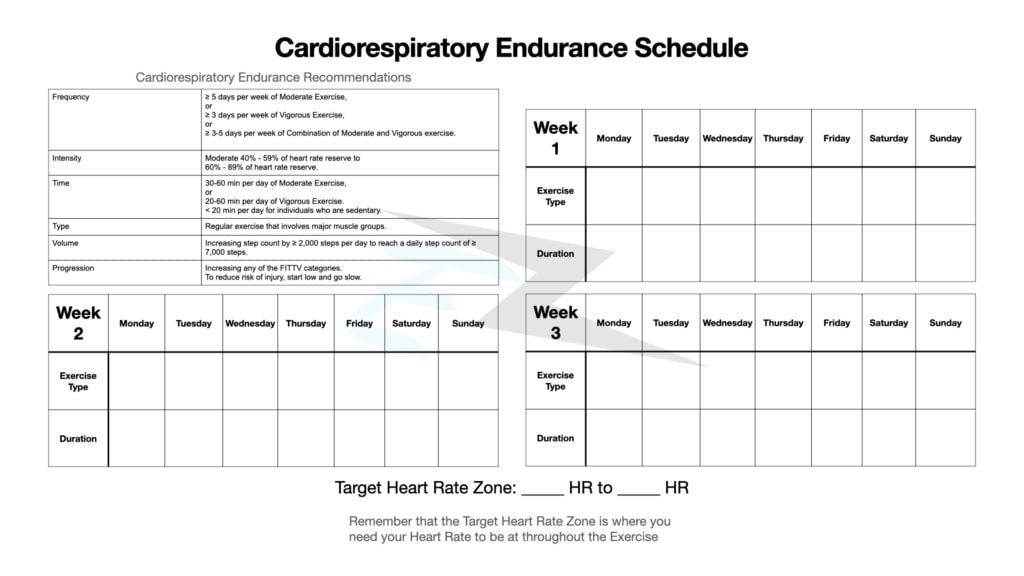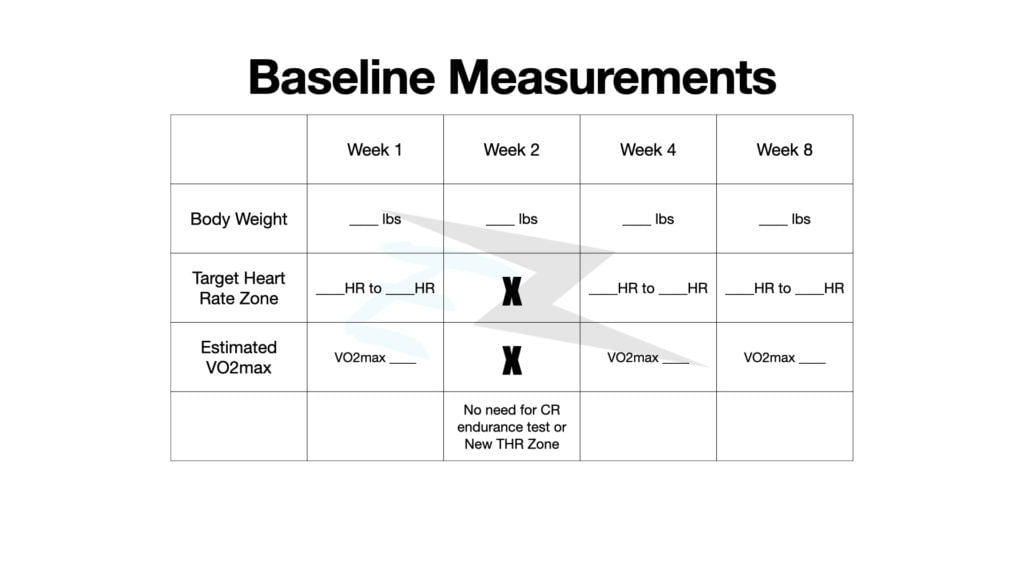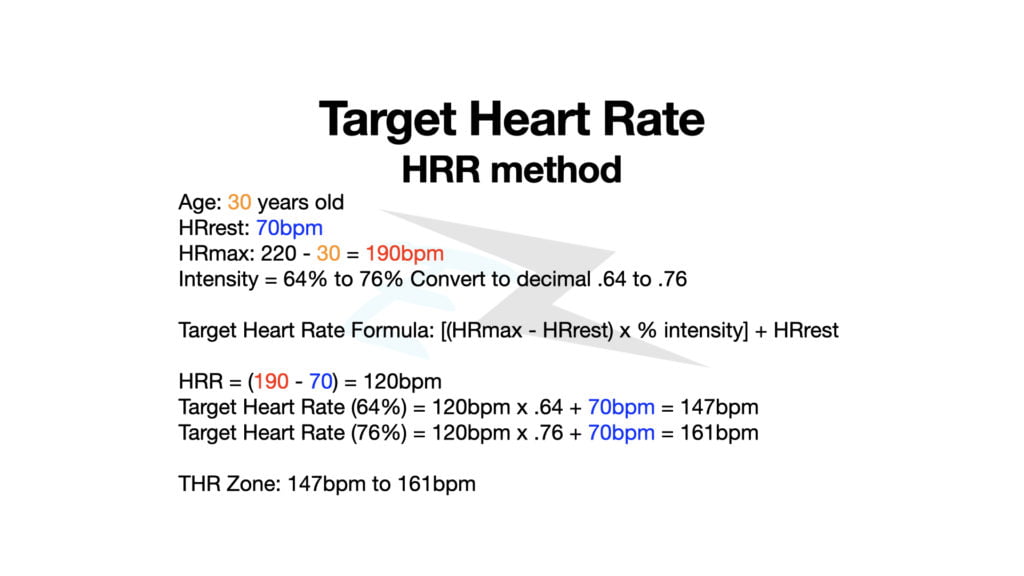In this article, I’m going over the Importance of your Cardiorespiratory Endurance (aerobic) and how you can create your own Aerobic program.
Before we get started, I just want to say that I actively look for new research that is being studied about the effects, procedures, standards, and benefits of Cardiorespiratory training.
Make sure you come back here since this article will be updated when new researches are released.
Also, if you’re looking for some cookie-cutter workout plan, I’m sorry you won’t find that here. I’m a 100 percent true believer in the Principles of Training, especially with Specificity and Individuality.

I’ve been training clients for many years and I’ve never prescribed the same workout plan. We all have different goals and fitness levels. What I found throughout the years is that individuals who obtain cookie-cutter programs tend to fail and not adhere to the program. This is coming from the client’s personal experience.
The biggest problems that come with cookie-cutter workout plans are the injuries and the health risks it puts you through.
Don’t get me wrong. I prefer you to engage in more Physical Activity. I’m all about being active!
If you’re just starting out your fitness journey. Yes, you will definitely see progression with any workout plan. But that progression will slowly decline once your body adapts to the workout plan. This is called a Fitness Plateau.
By learning the importance and the principles of training you’ll be able to adhere to a lifetime exercise program. Plus it’ll save you from future injuries.

With that being said, Let’s Get Started!
Cardiorespiratory Endurance or CR for short is the most important component of health-related physical fitness.
Being able to sustain longer physical activity throughout the activities of your daily life has a greater impact than being able to lift heavier.
For most, CR is more important than being stronger. With the exception of older adults whose muscular fitness is more important.
Think about this, when we’re younger, our day is filled with many activities. Activities like: having a full-time job, taking care of your kids (if you have kids), house chores, going to the gym, or hanging out with family and friends. Those are just some of the examples of activities of daily living or also known as ADLs.
There are many people out there that are a lot busier than that.
That is why it’s important to engage in a CR training program. Your heart needs the exercise to take on all the physiological stress you put it through throughout the day.
If you’re currently participating in CR Aerobic training, Keep It Up!
If not, don’t worry this article will help you create your own program.
Every time I mention these, remember what they stand for.
CR = Cardiorespiratory
ADL = Activities of Daily Living
Cardiorespiratory Endurance Definition
So what is cardiorespiratory endurance?
CR Endurance is the ability of your lungs, heart, and blood vessels to deliver the right amount of oxygen throughout your body during a PROLONGED physical activity.
Notice how I put the word PROLONGED in bold. This is because we’re talking about Endurance (Aerobic) and not Anaerobic.
Aerobic Exercise VS. Anaerobic Exercise
CR Aerobic or Endurance:
Aerobic is when your exercise intensity is low enough for your body to efficiently deliver oxygen throughout your body.
Aerobic Workouts can be carried out for longer periods.
Low Intensity = Oxygen is used to produce energy to carry out the activity.
Anaerobic exercise on the other hand is when the intensity is so high that your body cannot efficiently deliver oxygen throughout your body to be utilized for energy production.
Anaerobic Exercises can only be carried out for a short period at a time 2 to 3 minutes.
High Intensity = Oxygen is NOT required to produce energy to carry out the activity.
Examples of CR Aerobic and Anaerobic Exercises:
Aerobic (Endurance) | Anaerobic |
Jogging | Sprinting |
Walking | Strength Training |
Aerobics | Plyometrics |
Cardiorespiratory Endurance/Aerobic Benefits
“Aerobic Exercises are important in preventing Cardiovascular Disease.”
A person with a poorly-conditioned heart will require more work than a well-conditioned heart when performing the same task.
Heavy lifting, walking upstairs, taking heavy trash outside, or simply running to your room to get something puts strenuous demands on a poorly conditioned heart.
Regular engagement in CR endurance will strengthen your heart and help aid with your ADLs.
Lists of Cardiorespiratory Endurance Benefits
These are just a few of the many benefits of participating in regular CR endurance/aerobic exercise.
– Increases VO2 Max
– Red Blood Cells Goes Up. RBCs contain hemoglobin that transports oxygen in the blood.
– Decrease in Resting Heart Rate. Your heart gets stronger from the CR endurance/aerobic exercises. This means that your heart doesn’t have to work as hard to pump blood throughout your body.
– Lower Heart Rate During A Higher Workload. After a few weeks of your CR endurance/aerobic program, you’ll realize that the same tasks that you used to do before are not as hard as it was before you started.
Taking the trash out, running upstairs, or heavy lifting will not leave you out of breath anymore.
– Increase In The Number of Mitochondria. All energy that’s produced is made inside the Mitochondria.
Brief Summary of the Physiology of Cardiorespiratory
I can go all the way down to the cellular level of the physiology of Cardiorespiratory but I don’t want to bore you. I want to make this short and sweet so you get a basic understanding of what happens when we breathe.
When we breathe in air rich in oxygen, that oxygen-rich air gets taken up by the blood in the lungs and transported to our heart.
Once the blood that contains oxygen gets to our heart, our heart then pumps that blood throughout our body.
Muscles that are working will take oxygen and release carbon dioxide as a waste product.
The blood with high carbon dioxide content will then return to the heart that gets pumped to the lungs.
Then we exhale carbon dioxide.
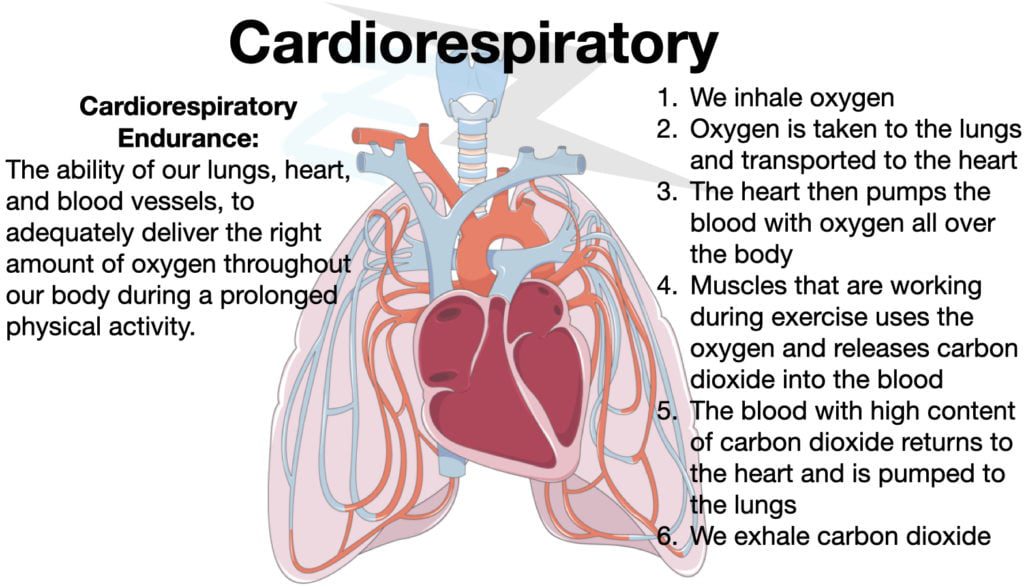
The Cardiorespiratory Endurance Recommendation
This is the guideline and recommendation for Cardiorespiratory Endurance.
FITT VP Guidelines:
Aerobic Exercise Recommended | |
Frequency | ≥ 3-5 days per week of Combination of Moderate and Vigorous exercise. |
Intensity | Moderate 40% – 59% of heart rate reserve to 60% – 89% of heart rate reserve |
Time | 30-60 min per day of Moderate Exercise, or 20-60 min per day of Vigorous Exercise. < 20 min per day for individuals who are sedentary. |
Type | The regular exercise involves major muscle groups. |
Volume | Increasing step count by ≥ 2,000 steps per day to reach a daily step count of ≥ 7,000 steps. |
Progression | Increasing any of the FITTV categories. To reduce the risk of injury, start low and go slow. |
Before Starting Your Program
Before engaging in any Exercise Program look over the Physical Activity Readiness Questionnaire and make sure you’re cleared to engage in an Exercise Program.
Here’s the PAR-Q Link.
Important PDFs To Download
Don’t forget to download and print these PDFs.
Like seriously download it now, it’ll be easier to follow along as you read through.
This might seem corney, but it works. According to experts in recent studies, writing down your goals is strongly associated with goal success. When you write down your goals, that means you can visually see it. This is related to when we see something it affects how we act, meaning that you’ll be more likely to be more proactive towards your goals.
This layout will help you with organizing your daily exercise plan. I’ve created a layout for a total of 4 weeks, but you can keep reprinting it.
You’ll use this to write down your results from your CR Endurance test.
BASELINE: Why You Need To Test Your Cardiorespiratory Endurance
It’s a great idea to test your CR endurance prior to starting a workout program.
Why?
Because, by testing your CR endurance, you’ll obtain your estimated maximal oxygen uptake or your VO2max. VO2max is the maximum volume of oxygen your body is able to utilize per minute of physical activity. Therefore the higher your VO2 max is the more conditioned you are.
By testing where your baseline is, you’d be able to compare your progress throughout your program. You’ll start noticing that the same intensity (workload) is not as hard as when you start.
Also, at the end of your program, you can test yourself again and see how much your endurance has improved.
How To Get Your Estimated Heart Rate and Target Zones
Since we’re creating an Aerobic/Endurance workout plan, obtaining your Estimated Maximal Heart Rate is very important. This way we can create a target heart rate zone to stay in throughout the workout. The Target Zone is the intensity part of your exercise.
It’s very easy to calculate your Estimated Max Heart Rate, but calculating your Target Heart Rate Zones takes a little bit more effort.
1st Step: Obtaining Your Estimated Max Heart Rate
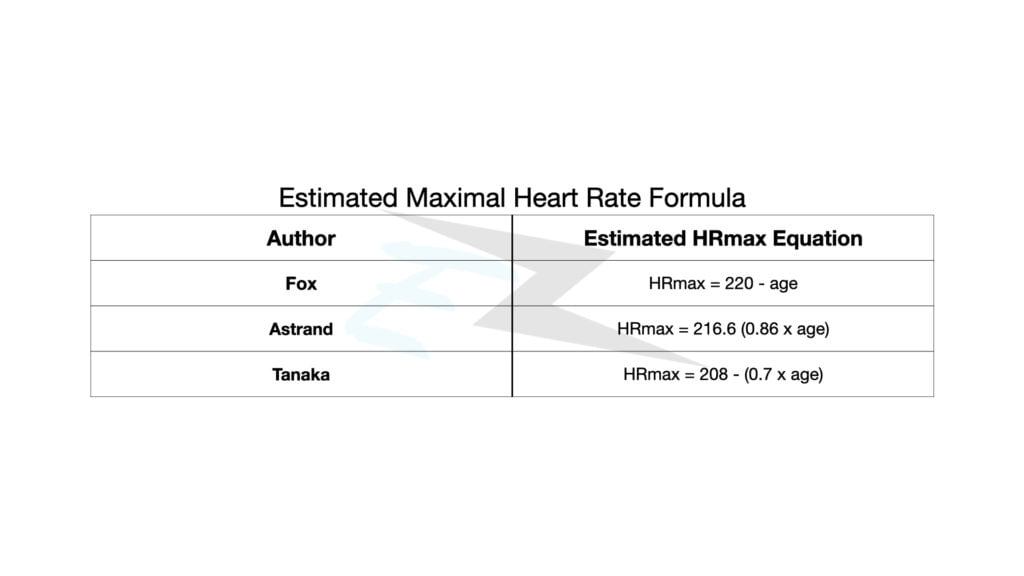
2nd Step: Obtaining Your Target Heart Rate Zone
Once you’ve obtained your Estimated Max Heart Rate, you’ll use the Heart Rate Reserve Method to obtain your Target Zone.
HRR (Heart Rate Reserve) has been studied for many years and it’s one of the more accurate methods to estimate the intensity of an exercise.
To obtain your Target Heart Rate zone you’ll need 2 measurements. You’ll need a measurement of your HRmax which you did already and measurement of your resting heart rate.
To obtain your resting heart rate you can either:
Wake up first thing in the morning and feel your pulse for 30 seconds and multiply it by 2.
OR
You can rest quietly for 10 minutes and count your pulse for 30 seconds and multiply by 2.
Once you obtain your HRmax and HRrest use this equation to calculate your Target Heart Rate Zone.
We’ll be using 64% to 76% for your Percent Intensity.
Target Heart Rate Zone (Heart Rate Reserve Method) Equation:
[(HRmax – HRrest) x % intensity] + HRrest
I hope that wasn’t confusing! If you had a hard time calculating your Target Heart Rate Zone, feel free to contact me and I’ll help you calculate your THR Zone!
Ways To Test Your Cardiorespiratory Endurance
I’ve ranked the list from LEAST difficulty for beginners to HIGHER difficulty for more advanced people.
The list I made is the ones that can be performed with minimal equipment. I personally use these tests to calculate my client’s cardiorespiratory endurance. These tests can be done at your local high school track or a football field.
1. The 1 Mile Walk Test
I use the 1-mile walk test for clients who are unable to run. Since running requires a lot of stress on the joints and requires a higher fitness level, the 1-mile walk test is more suitable for clients who are still in the beginning stage of their fitness journey.
Equipment: Stopwatch (phone) and a track or a premeasured 1-mile course.
1 Mile on a standard track is 4 laps. 1 Mile can be measured as 440 yards. So if you’re using a football field, it’ll be up and down twice and then back up 40 yards.
Prior to testing, make sure you obtain your body weight.
Procedure for the 1 Mile Walk Test:
- Walk the 1-mile course at a brisk pace, making sure that your heart rate is above 120 beats per minute. You can check your heart rate by palpating the radial artery (outside of your wrist) and the carotid artery (neck).
- At the end of 1-mile walk, check your walk time (how long it took for you to complete the test) and IMMEDIATELY count your pulse for 10 seconds and multiply it by 6 to get your heart rate in beats per minute.
- Convert your time to minute units. For example, if you completed the test in 12:45 seconds, you need to divide 45s to 60s to get a decimal. So, 45s ÷ 60s = .75
Your time will be 12.75 - Plugin your data into the formula to obtain your VO2max.
VO2max = 88.768 – (0.0957 x W) + (8.892 x G) – (1.4537 x T) – (0.1194 x HR)
W = Weight in Pounds
G = Gender (0 for women, 1 for men)
T = Total Time in Minute Units
HR = Heart Rate.
2. The 1.5 Mile Run/Walk test
On the other hand, if you’re more advanced I recommend doing this test. The 1.5 miles run test is not recommended for unconditioned beginners. If you’re over the age of 45 years old I recommend getting medically cleared before performing the 1.5-mile test.
Contraindications for this test: Unconditioned beginners, people who have symptoms of heart disease, and people with known heart disease.
Equipment: A stopwatch (phone) and a track or premeasured 1.5-mile course.
1.5 Mile on a standard track is very close to 6 laps. So if you’re going to use a track at your local high school, make sure you conduct the test by doing 6 laps.
Before testing, make sure you obtain your weight in KILOGRAMS. This is important that you obtain your weight in kg or you could get an invalid VO2max.
- First things first make sure you have a place for the test. Make sure you don’t put yourself in harm by running in the street, if you do use the sidewalks or trails designed for walking and running.
- Start the test by running/jogging/walking, the main goal is to cover 1.5 miles in the fastest time possible.
- Once you complete the distance, jot down your time.
- You’ll need to convert your time into minutes, this will be the same procedure as step 4 for the 1 Mile Walk Test above.
For example, if you completed the test in 12:45 seconds, you need to divide 45s to 60s to get a decimal. So, 45s ÷ 60s = .75
Your time will be 12.75
- Plugin your data into the equation to obtain your VO2max. Be aware to use the right equation.
Men: VO2max = 91.736 – (0.1656 x W) – (2.767 x T)
Women: VO2max = 88.020 – (0.1656 x W) – (2.767 x T)
W = Weight in Kilograms
T = Time in Minutes Units
3. The Step Test
Quick Reminder: this test is not for those who are inexperienced and only to be performed for those who are more experienced with cardiorespiratory fitness.
This test is a submaximal workload, which means that all-out effort is required to complete and obtain a more accurate V02max.
I remember doing this test in college, I’m not saying that I’m the most in-shape person ever but I feel like I’m more conditioned than most of the population, and this Cardiorespiratory Endurance test kicked my butt!
There has only been one time where I used the step test as an initial CR endurance test for a brand new client. The only reason why is because I know the person and I know that they could handle the workload.
Remember to only perform this test if you’ve been engaging in Cardiorespiratory Endurance activities or a very well-conditioned person.
Equipment: A stopwatch, a bench, or a bleacher that is 16¼ inches high, and a metronome. There are plenty of mobile apps that you can download to use as a metronome. Youtube also has great metronome sounds!
- For males, you will perform 24 complete step-ups per minute and you need to set your metronome to 96 beats per minute.
For females, you will perform 22 complete step-ups per minute and you need to set your metronome to 88 beats per minute.
- Begin the test and perform step-ups for exactly 3 minutes.
- Upon completing the 3 minutes, immediately take your heart rate for 15 seconds and multiply it by 4.
- Plugin your data into the formula to obtain your VO2max.
Step test VO2max Formula:
Men: VO2max = 111.33 – (0.42 x Heart Rate after the test)
Women: VO2max = 65.81 – (0.1847 x Heart Rate after the test)
Once you finish testing yourself, don’t forget to write down your VO2max on your Baseline Measurement pdf.
Creating Your Workout Schedule
Now, that you’ve obtained your baseline VO2max, it’s time to create your workout plan. Make sure you’ve downloaded the PDFs for this part of your journey. It’s very important to keep track of your progress throughout your fitness program.
We’ll be using the FITT-VP model to create your CR endurance/aerobic workout plan.
Frequency
The recommended Frequency is 3 – 5 days per week for vigorous aerobic activity. For Moderate aerobic activity, the recommendation is 5 days per week. But remember to start small and gradually increase. Only do what your fitness level will let you.
Intensity
The Intensity you’re going to use is 64% and 76% of your Reserve Heart Rate, which you already obtained! If not scroll back up to and calculate it.
Since you’ve calculated your intensity already, write it down on your weekly planner. Keep track of your target heart rate zone, because in a few weeks your target heart rate zone will change.
This change happens because your Aerobic/Endurance capacity increases, which means you got stronger! Yay! But it also means you’ll have to increase your workload! Yay!
Time
If you recall, the recommendations for aerobic exercise time/duration is 30-60 minutes per day of moderate-intensity or 150 minutes or more per week.
Although, if you’re just starting out, 20 minutes of exercise per day is beneficial for those who are previously sedentary. So if you’re starting out 20 minutes is 100% OKAY!
This is what you’re going to do now.
If you’re a bit more experienced I want you to pick any of the 5 days of the week and put in 30 minutes in the duration row.
If you’re a beginner and this is your first time engaging in a workout routine, I want you to pick 3 days of the week and put 20 minutes in the duration row.
Type
There are many varieties of exercise types. This will depend on your skill level and the amount of stress your body can handle.
I’ve made a small list that you can choose from.
This list will have exercise types from beginners to a more advanced population.
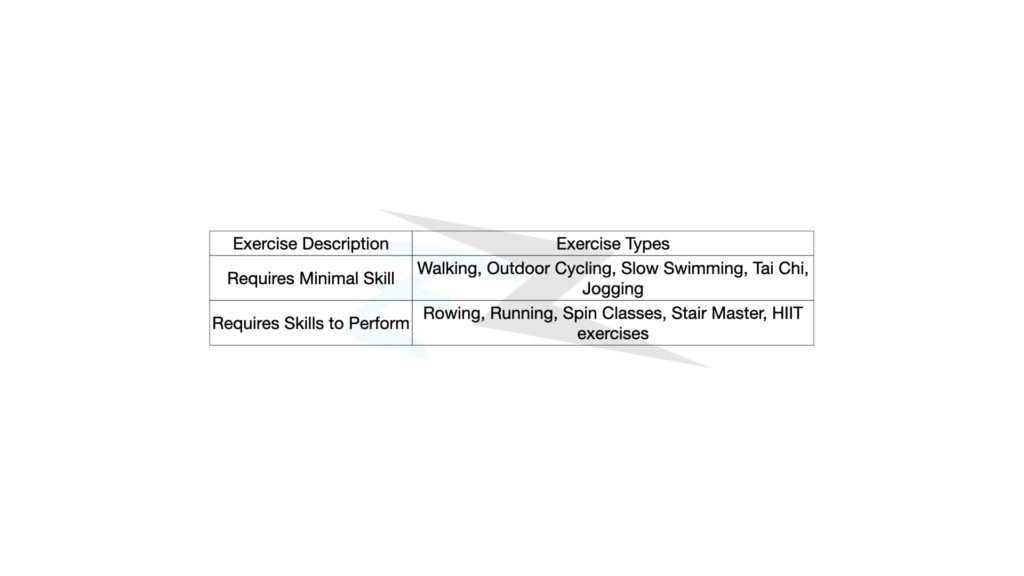
Volume
As you improve your Endurance and Stamina, your volume will start to increase.
Volume is the product of Frequency, Intensity, and Time. That means throughout your workout program, the number of times you workout per week and the intensity will increase.
You’ll notice that the same exercise with the same intensity is not as hard as it was when you started.
According to ACSM, for weight management longer duration of exercise may be needed especially in individuals who spend a large amount of time in sedentary behavior. To keep the weight off you’ll need to adhere to a fitness lifestyle. It’s easier to get the weight back once you lose it.
But don’t worry soon enough you’ll be working out every day and you’ll be enjoying it!
Progression Rate
Progression is when you increase one of the FITT VP formulas.
I’ve written an article explaining what and how to use progression. In the article, I talk about how to break a fitness plateau and how to implement progression.
I invite you to read it to get a better understanding of how to properly progress to prevent fitness plateau as well as any injuries.
CR Endurance Progression
It is recommended by ACSM to increase training sessions by 5 to 10 minutes per week.
By the fourth week, your frequency should be increased to 5 times per week.
Increasing the Volume means an increase in Frequency, Intensity, and Time.
Also, a good technique I do is to switch up the exercise type. There will be 1 week where I run, then switch up the following week to cycling. Or sometimes I’ll do half cycling and half running.
There are many ways to change up your routine to prevent a Fitness Plateau.
You can do any type of exercise you just need to remember to stay within your Target Heart Rate Zone to keep improving your Aerobic/Endurance capacity. If you go too low in intensity, you won’t be progressing at the best, most optimal rate.
Be Creative! Find something you love doing.
SUCCESS!

I hope I was able to help you out with creating your Cardiorespiratory Endurance workout plan.
I wish you the best of luck! I know that you can do it, I believe in you!
And if you ever get stuck on any part in creating your workout plan, don’t hesitate to contact me.
I mean it!
You can contact me through any of my social media and I will respond as soon as I read it!
Again, I wish you the best of luck and Congratulations on taking the first step of your Fitness Journey.
Here are some helpful resources!


